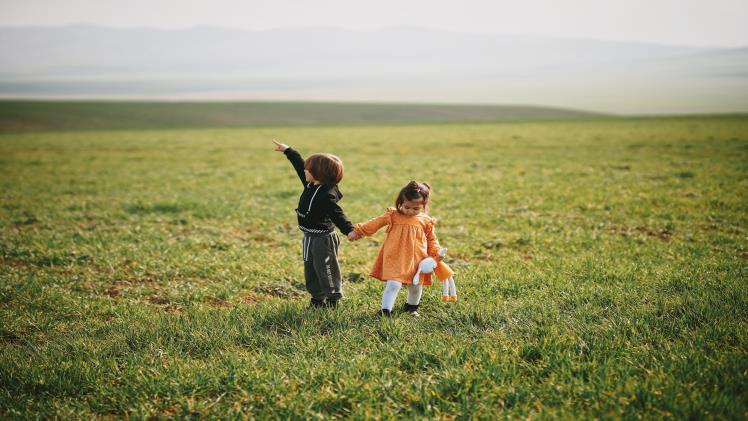Divorce can have a profound impact on children, shaping their emotional and psychological well-being in ways that often go overlooked. It’s crucial to recognize that children experience their parents’ divorce differently at different ages. For example, younger children may struggle with fears of abandonment and disrupted routines, while teenagers might grapple with feelings of anger, guilt, and divided loyalties. Understanding these age-specific challenges can help parents and caregivers provide tailored support for their children during this difficult transition.
Moreover, the impact of divorce on children extends beyond just the immediate aftermath. Research has shown that children from divorced families may face long-term consequences such as lower academic achievement, increased risk of mental health issues, and difficulties forming secure relationships in adulthood. By acknowledging these lasting effects, adults can be more attuned to the ongoing needs of children from divorced families and offer them holistic support as they navigate life post-divorce.
Creating a Safe and Open Environment for Communication
Creating a safe and open environment for communication is essential when addressing the topic of divorce with children. It’s crucial to establish trust and assurance that their thoughts and feelings will be respected without judgment. Encouraging an open dialogue allows children to express themselves freely, fostering a sense of security in the midst of uncertainty. Moreover, demonstrating active listening and empathy paves the way for meaningful conversations, promoting a healthy understanding of their emotions.
Furthermore, setting boundaries against negative or confrontational language during discussions can help maintain a safe space for communication. By emphasizing mutual respect and constructive dialogue, children are more likely to feel comfortable expressing their concerns without fear of judgment or retribution. This approach not only empowers them to voice their feelings but also instills valuable conflict-resolution skills that they can carry into adulthood.
Age-Appropriate Discussions and Language
When discussing divorce with children, it’s essential to use age-appropriate language and engage in discussions tailored to their developmental stage. For young children, simple and concrete language can help them understand the basic concept of divorce without overwhelming them with complex details. Using words like mom and dad won’t live together anymore can be more understandable than legal terms like custody or visitation rights.
For older children, providing more detailed information about the reasons for the divorce and how it will impact their lives can help them process the situation better. It’s crucial to be honest while avoiding sharing adult-specific details that may burden or confuse them. By adapting our language and discussions to fit each child’s age and understanding, we can create a supportive environment for them to navigate through this challenging time with greater resilience.
By adjusting our conversations about divorce based on a child’s age, we not only ensure they comprehend what is happening but also demonstrate that we respect their maturity level. Open communication using appropriate language helps children feel more secure during a major life transition like divorce, promoting emotional well-being as they adapt to the changes in their family dynamic.
Addressing Emotions and Reassurance
When addressing emotions and providing reassurance to children about divorce, it’s essential to acknowledge and validate their feelings. Encouraging open communication allows children to express their emotions without fear of judgment, fostering a sense of safety and trust. Assure them that it’s okay to feel sad, angry, or confused during this time and emphasize that they are not alone in experiencing these emotions.
Moreover, offering consistent reassurance can help alleviate children’s anxieties about the future. Remind them that both parents love them unconditionally and will continue to provide support. Creating a stable routine and maintaining familiar traditions can also lend a sense of comfort during this period of transition. Meet at a pizza restaurant, a library or some common ground. By acknowledging emotions and consistently providing reassurance, parents can guide children through the complexities of divorce with understanding and compassion.
Providing Stability and Routine During Transition
During a transition as significant as divorce, providing stability and routine for children is crucial. Maintaining consistent daily schedules, such as regular mealtimes and bedtime routines, can offer a sense of predictability in an otherwise uncertain time. While it may be tempting to make radical changes to seek a fresh start, keeping familiar activities and rituals intact can help children feel secure and grounded.
In addition to preserving existing routines, creating new ones can also offer stability during this period of change. Establishing family traditions or activities that are exclusive to post-divorce life can provide a sense of continuity and belonging. This approach allows children to build new memories and experiences within the framework of dependable routines. By prioritizing stability and routine amidst the transition, parents can offer children a steadying anchor as they navigate the changes brought on by divorce.
Co-parenting Communication and Consistency
According to child custody lawyers and experts, Co-parenting communication and consistency are the cornerstones of a successful post-divorce parenting dynamic. Consistent and clear communication between co-parents not only fosters a sense of stability for children but also allows them to navigate their new family structure with less confusion and anxiety. This can be achieved through open dialogue, actively listening to each other’s concerns, and setting aside personal differences for the sake of the children.
Consistency in rules, routines, and expectations across both households is crucial in providing children with a sense of stability during a turbulent time. When co-parents work together to maintain similar discipline strategies and schedules, it helps create an environment where children feel secure no matter which parent they are with. Moreover, consistent communication between parents about important decisions regarding schooling, health care, and extracurricular activities demonstrates unity in co-parenting, showing the children that despite the divorce, they are still part of a cohesive parental team.
Conclusion: Nurturing Resilience and Healing
In conclusion, nurturing resilience and healing in children experiencing divorce is essential for their emotional well-being and long-term success. It’s important to create a safe space for open communication, validate their feelings, and help them build coping strategies. By encouraging mindfulness practices, such as deep breathing or journaling, children can learn to manage stress and process their emotions in a healthy way.
Additionally, emphasizing the importance of maintaining routine and stability amidst the changes can provide a sense of security for children navigating through divorce. Healing is an ongoing process, so it’s crucial to consistently offer support and reassurance as they adapt to this new chapter in their lives. Overall, by fostering resilience and promoting healing mechanisms, we can empower children to navigate the challenges of divorce with strength and grace.

